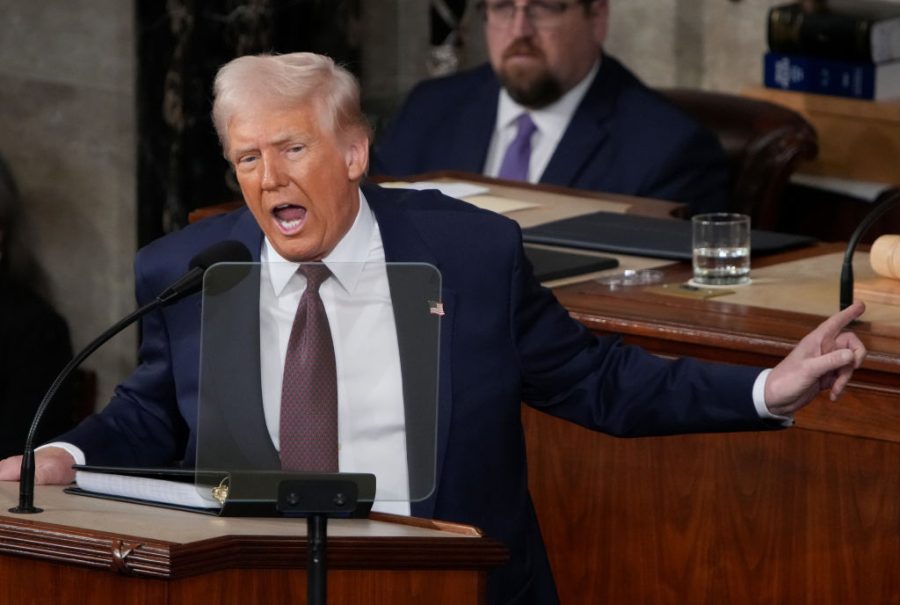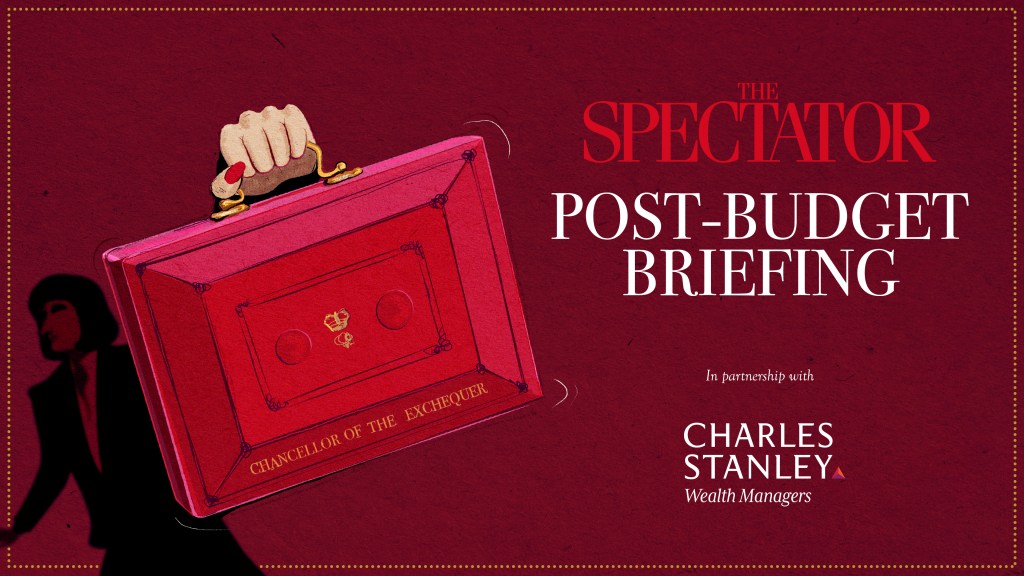‘“Shalom Hamas” means Hello and Goodbye – You can choose.’ So began Donald Trump’s furious social media post, an ultimatum wrapped in a linguistic dagger. The Hebrew word ‘shalom’ has a third meaning – peace – but Trump left that one out. Perhaps we can all agree: that option is no longer on the table in any outcome.
Instead, what followed was a declaration of war, at least rhetorically. Trump threatened Hamas with total destruction if they do not release the remaining hostages and return the bodies of those they have murdered. He called them ‘sick and twisted’ for keeping the corpses. He promised Israel everything it needed to ‘finish the job’. He advised Hamas leadership to flee Gaza while they still had time and told the people of Gaza that their future could be beautiful – but only if they let the hostages go. Otherwise, they were ‘DEAD’. And then, the final warning: ‘RELEASE THE HOSTAGES NOW, OR THERE WILL BE HELL TO PAY LATER!’
This unpredictability is one of Trump’s greatest assets
It was classic Trump: blunt, theatrical, and deliberately unnerving. His style is not one of quiet diplomacy but of forceful statements that shift the political landscape. Many of his past threats seemed, at first, impossible to carry out – until they produced results. The threat of total obliteration didn’t mean that exact consequence was inevitable, but it did mean something was about to change. We saw a similar technique with his hard-balling of Zelensky just under a week ago, when Trump unceremoniously kicked him out of the Oval Office, only for the Ukrainian President to eventually adopt a more conciliatory tone. The pattern is clear: Trump issues an extreme threat, and even if it doesn’t play out exactly as stated, it dislodges inertia. It’s high risk, and often ugly, but that’s the world we all live in today.
This unpredictability is one of Trump’s greatest assets. His enemies can never be sure whether his threats are exaggerated bluster or literal intent. Hamas, for all its bravado, understands this. Their spokesman quickly responded with nervous deflections, claiming that Trump’s threats were emboldening Israel to break ceasefire agreements and starve Gaza’s civilians. A second statement, to a Turkish news outlet, protested that Hamas was abiding by a US-brokered deal and that it was Israel, not them, who was obstructing the process. The subtext was clear: Hamas wants Washington to restrain Israel, as it did under Biden. Their concern is not that Trump’s words mean nothing, but that they might mean everything.
At the same time, this technique has its risks. If used too often, it loses its power. Trump’s previous deadline – demanding all hostages be released by midday or face catastrophe – came and went without an immediate explosion. But that deadline did break an impasse, leading to the final releases from the first phase of the deal. The lesson? Even when Trump’s threats don’t unfold precisely as stated, they still reshape reality. The danger is that if repeated too often, the world – and more importantly, the President’s enemies – may start to recognise the pattern and discount the threats as mere posturing. However, they may do so at their own peril.
This latest uproar came as Arab states threw their support behind Egypt’s newly unveiled Gaza reconstruction plan – a 90-page document filled with grand promises but conspicuous omissions. Most notably, it does not mention Hamas at all, nor does it explicitly propose a new permanent buffer zone for Israel’s security.
The proposal envisions an enormous $53 billion (£41 billion) transformation of Gaza, complete with a five square mile addition to the strip’s overall area. The plan would be to use rubble to create an artificial land extension off the coastline, amounting to an expansion of two per cent of its total area.

This vision of gleaming new buildings and modern infrastructure was a direct response to Trump’s own Gaza plan, which was widely mocked as absurd. Yet his proposal had one crucial effect: it forced Arab states to act. After months of ignoring Gaza’s plight – and charging desperate Palestinians thousands of dollars in bribes to flee into Egypt – Cairo suddenly produced a sweeping alternative vision, complete with sleek Dubai-style computer-generated renders of an idealised Gaza skyline, all to be completed in just five years of work.
Drafted at such speed, one can’t help but wonder if the entire plan was simply spun out by ChatGPT, generating perfect, polished imagery with little connection to reality. Though the final product was more professional an approach than Trump’s AI generated video meme on the same topic, it has a similar chance of reaching completion.
Yet the global response to these two visions has been markedly different. Trump’s plan was ridiculed as unworkable, while the Egyptian plan has been treated with a degree of diplomatic politeness, despite its own glaring flaws. The assumption that Hamas will simply disappear is a fantasy. The idea that a Palestinian technocratic committee – approved by Hamas, but not run by it – can govern Gaza smoothly is, at best, a hopeful fiction. If Trump’s Gaza Riviera was a fantasy, then so is this.
And so, the world watches as competing mirages are drawn on the sand, knowing full well that the battlefield remains drenched in blood. Trump’s threats may or may not come to pass, but they have already changed the conversation. Will Hamas take his latest threat seriously? Will the Arab world’s plan for Gaza be anything more than another stack of diplomatic papers? Or will history, as it so often does, sweep both grand visions away in the tide of war?








Comments